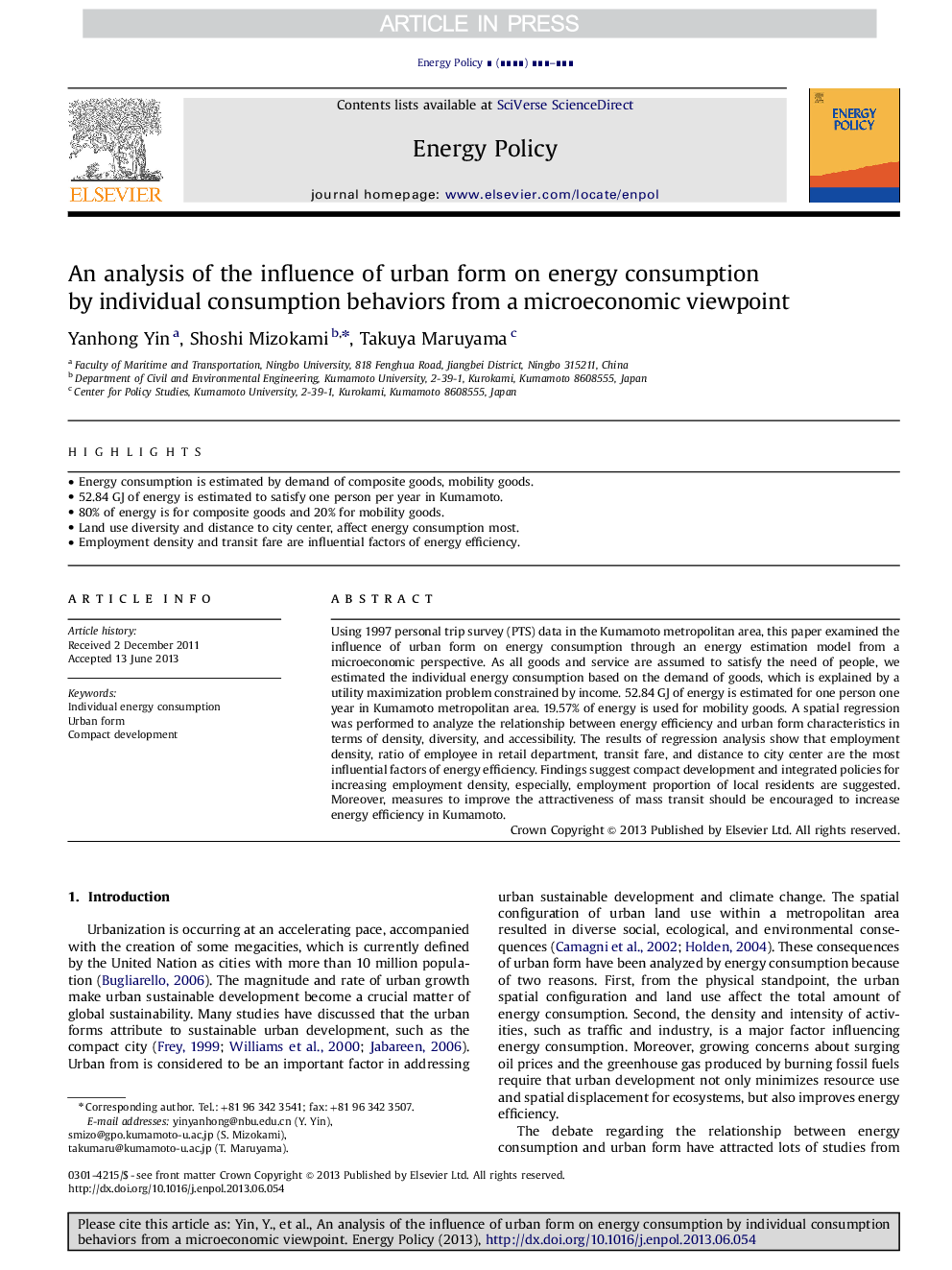| Article ID | Journal | Published Year | Pages | File Type |
|---|---|---|---|---|
| 7404998 | Energy Policy | 2013 | 11 Pages |
Abstract
Using 1997 personal trip survey (PTS) data in the Kumamoto metropolitan area, this paper examined the influence of urban form on energy consumption through an energy estimation model from a microeconomic perspective. As all goods and service are assumed to satisfy the need of people, we estimated the individual energy consumption based on the demand of goods, which is explained by a utility maximization problem constrained by income. 52.84Â GJ of energy is estimated for one person one year in Kumamoto metropolitan area. 19.57% of energy is used for mobility goods. A spatial regression was performed to analyze the relationship between energy efficiency and urban form characteristics in terms of density, diversity, and accessibility. The results of regression analysis show that employment density, ratio of employee in retail department, transit fare, and distance to city center are the most influential factors of energy efficiency. Findings suggest compact development and integrated policies for increasing employment density, especially, employment proportion of local residents are suggested. Moreover, measures to improve the attractiveness of mass transit should be encouraged to increase energy efficiency in Kumamoto.
Keywords
Related Topics
Physical Sciences and Engineering
Energy
Energy Engineering and Power Technology
Authors
Yanhong Yin, Shoshi Mizokami, Takuya Maruyama,
